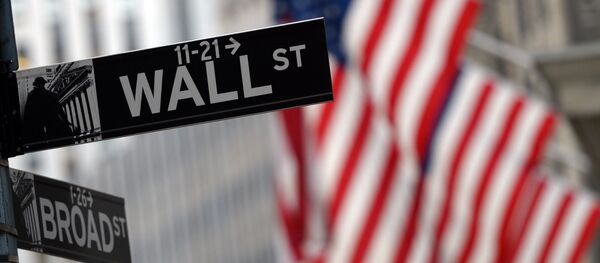US manufacturing added an annualized 0.2% in February, following a 0.5% gain the previous month, according to data by the Federal Reserve. It is the first time since April 2015 in which US manufacturing has advanced for two months straight. However, overall industrial production in the US, including the oil business, plunged 0.5% year-on-year due to the decline in utilities, the greatest since 2007.
"This strengthens the tentative perception that manufacturing is making a firmer step in the first quarter, which is encouraging," David Sloan of the New York-based 4cast Inc. said.
The US consumer price index excluding food and energy rose 0.3% in February after adding 0.3% the previous month, according to a separate report by the Labor Department. Meanwhile, inflation for the past 12 months added 2.3%, its greatest since May 2012, exceeding the Fed's inflation target of 2% and allowing the regulator to increase borrowing costs in June, should these be untouched at the outcome of Federal Open Market Committee (FOMC) today.
"While few expect the Fed to announce a policy rate hike today, further evidence of building inflationary pressures will reinforce the case for further hikes in the coming months," Jim Baird of Kalamazoo, Michigan-based Plante Moran Financial Advisors said.
Consequently, the dollar gained against the basket of currencies, with swings in FX rates reflecting the perceived overall economic conditions. US Treasury bonds fell in value as investors have been looking at other assets offering higher returns, yet, Treasury yields ticked up insignificantly.
Healthcare costs rose 0.5% in February, rents added 0.3%, and clothing prices rose 1.6%, their greatest since February 2009.
"There are signs that inflation pressures are beginning to build up," Emanuella Enenajor of New York-based Bank of America said. "We need to see the gains continue. The outlook on inflation is improving. In a year or two, we'll see inflation reach the Fed's goal."
In industrial production, however, albeit gains in factory output, the situation is still complex. Warmer weather conditions dealt a blow to utilities, sagging 4% in February, as last February was the warmest since 2000 according to National Oceanic and Atmospheric Administration data. The mining sector shrunk by 1.4% due to the ongoing unease in the oil business, where drilling slumped by 15.6% in February. The US oil derrick count extended losses, declining to 480 active oil rigs from 489 in commission in January.
A stronger dollar continues to impair US industrial production, rendering imports more competitive in the US domestic market. Paradoxically, general improvements in the US economic situation affect US industrial production negatively, with only high-tech manufacturing posting gains, whilst other industries suffer.


